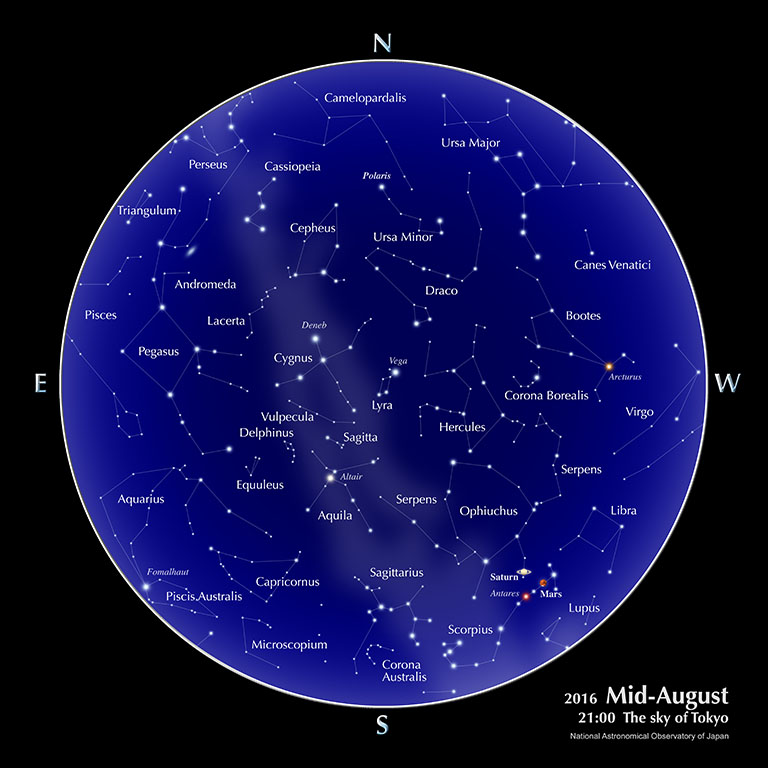Astronomical Information | 2016 | August
The sky of Tokyo

Calendar (August)
| 3 | New Moon |
| 9 | Traditional tanabata (traditional star festival) |
| 11 | First Quarter Moon/ Mountain Day [Yama-no-hi](national holiday) |
| 12 | The Perseid Meteor Shower peaks around 22:00 (The best time for viewing is before dawn on the 13th. On the order of 45 meteors per hour are expected. Conditions are good after the Moon sets around Midnight.) |
| 14 | Saturn at stationary point |
| 17 | Greatest Eastern Elongation of Mercury |
| 18 | Full Moon |
| 25 | Last Quarter Moon |
| 30 | Mercury at stationary point |
The days for the peak activities of the meteor showers are based on the predictions of IMO (International Meteor Organization).
Planets
- Mercury
- Mercury reaches its greatest eastern elongation on the 17th, but as seen from Tokyo its elevation is not even 10 degrees at 30 minutes after sunset, making observation difficult.
- Venus
- Venus appears close to the Sun and is not suited for observations.
- Mars
- Mars moves away from the constellation Libra, approaching the constellation Scorpio. It can be seen in the southern to southwestern evening sky. Its brightness is -0.8 magnitude to -0.3 magnitude.
- Jupiter
- Jupiter moves from the constellation Leo to the constellation Virgo. It can be seen low in the western sky. Its brightness is -1.7 magnitude.
- Saturn
- Located in the constellation Ophiuchus, Saturn can be seen in the southern to southwestern evening sky. Its brightness is 0.3 magnitude to 0.5 magnitude.
Source: Ephemeris Computation Office, NAOJ
With the “Sky Viewer” you can easily explore the appearance of a typical urban night sky (planets and constellations are visible).The Celestial Phenomena section of the glossary explains the planetary phenomena terms: greatest elongation, opposition, conjunction, stationary, etc.